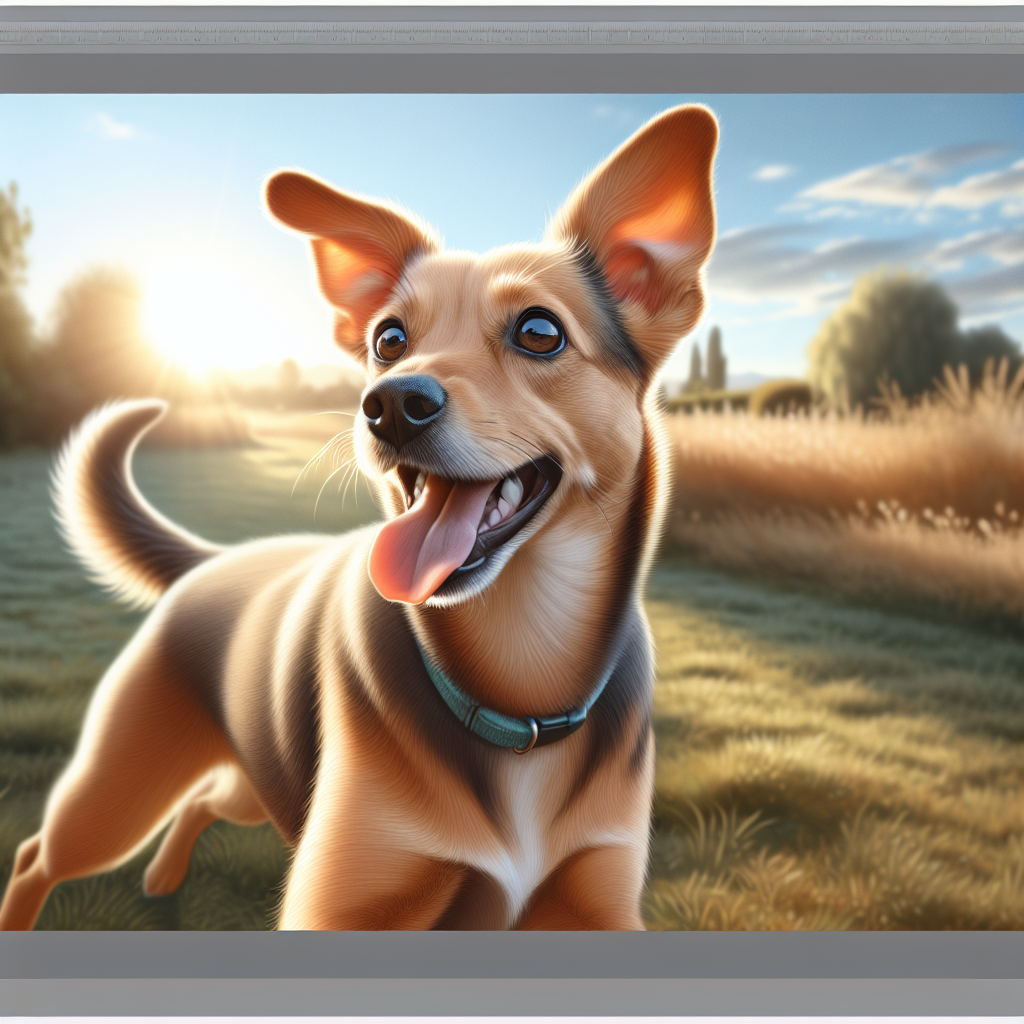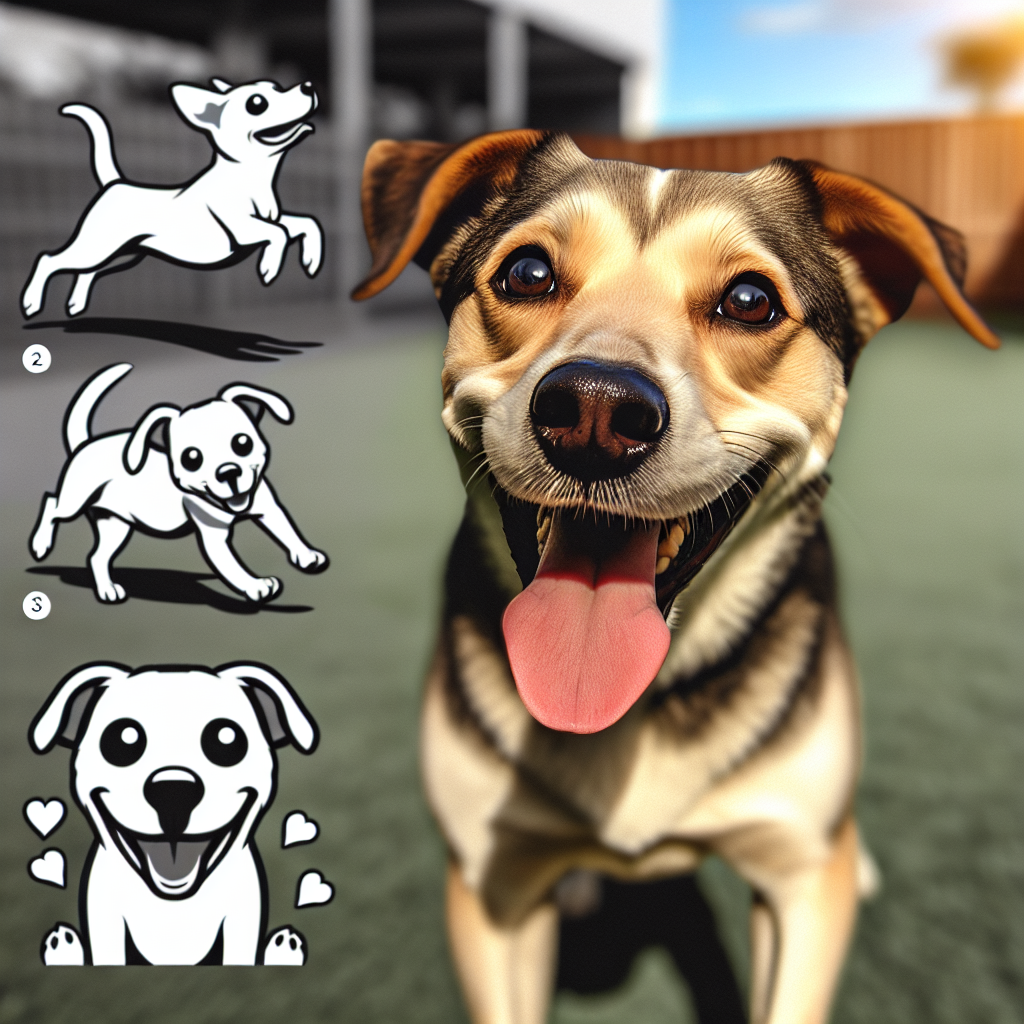The Flea Menace: Why Dogs and Fleas Don’t Mix

Alright, folks, let’s dive into the itchy world of fleas. Picture this: your dog, your best buddy, is scratching like there’s no tomorrow. You might think, “Oh, just a scratch.” But hold your horses – it’s more than that. Flea problems in dogs are as old as time, and they’re not just an annoyance. These little pests bring a suitcase full of trouble. They bite, they irritate, and sometimes they even carry diseases. Your dog begins to itch, then scratch, and before you know it, your furry pal is in a world of discomfort.
Now, let’s not kid ourselves. Fleas are persistent little buggers. They find their way into your home by hitching a ride on your dog, and then – bam! – it’s like you’ve got a whole circus under your roof. Ever tried catching a flea with your bare hands? Good luck with that. Fleas multiply faster than you can say “itchy.”
So, here we are, trying to find a solution to this flea fiasco. Enter flea powders. These fine, magic dusts promise to save the day. But do they really? Does flea powder work on dogs? Let’s see.
Understanding Flea Powders: What They Are and How They Work
Flea powders – sounds like something out of a wizard’s spellbook, right? Well, not quite. They’re more like a knight’s sword in the battle against fleas. Designed to tackle those pesky bugs, flea powders are sprinkled onto your dog’s fur. The idea is simple: the powder gets into the fleas’ business and, well, ruins their day.
Now, how flea powders work on dogs is pretty straightforward. Most of these powders contain ingredients that either kill or repel fleas. The active ingredients do the heavy lifting, targeting fleas at various stages of their life cycle. Some powders even claim to have long-lasting effects, keeping those critters at bay for weeks.
But let’s be real. Not all flea powders are created equal. Some work like a charm while others, well, not so much. It’s a bit like rolling the dice. And, of course, there’s the matter of choosing the right one for your dog. But hang tight – we’ll get to that in just a second.
Types of Flea Powders: Breaking Down the Options
Now, let’s talk shop. Types of flea powders for dogs – there are quite a few. You’ve got your chemical-based powders, which are the heavy hitters. They’ve got potent stuff that knocks fleas out cold. But, here’s the catch – they’re not always the gentlest on your dog’s skin.
Then, there’s the natural route. These powders boast ingredients like essential oils or diatomaceous earth. They’re kinder to your dog’s skin, but sometimes they may not pack the same punch as their chemical cousins. So, it’s a bit of a trade-off.
And let’s not forget the hypoallergenic powders. For dogs with sensitive skin, these are a godsend. But remember, not every powder is suitable for every dog. It’s like trying on shoes – you’ve got to find the right fit.
The Application Process: A Step-by-Step Guide
You might be thinking, “Alright, I’ve got the powder, now what?” Applying flea powder on dogs isn’t rocket science, but there’s a method to the madness. First off, make sure your dog is dry – no wet fur here, folks.
Start by sprinkling the powder onto your dog’s coat. Get it into those hard-to-reach spots like under the arms and between the toes. And don’t forget the tail – fleas love hanging out there. Gently work the powder into the fur, but be careful not to create a dust storm.
One thing to remember – avoid the eyes, nose, and mouth. Your dog doesn’t need a face full of powder. And, once you’re done, give your dog a good brush to distribute the powder evenly.
It’s not a one-and-done deal, either. You might need to reapply, depending on the infestation level and the specific product instructions. And, of course, keep an eye on your dog’s skin for any signs of irritation.
Safety Concerns: Keeping Your Dog Safe While Using Flea Powders
Now, let’s talk safety. After all, we want our dogs to be happy and healthy, not itchy and miserable. Dog safety with flea treatments is crucial. Some dogs might have reactions to certain ingredients, so always do a patch test first.
Also, keep a close watch on your dog after applying the powder. If you notice any irritation or unusual behavior, it might be time to hit the pause button and consult your vet.
And hey, don’t forget about the humans in the house. Flea powders can be irritating to us, too. So, after you’re done playing the flea-fighting hero, wash your hands thoroughly.
At the end of the day, flea powders can be a useful tool in the fight against fleas. But, like anything, they come with their own set of challenges and considerations. So, arm yourself with the right info, and you’ll be ready to tackle the flea menace head-on.
Thanks for sticking around, folks. You’re well on your way to becoming a flea-fighting pro. Keep your chin up, and may your days be flea-free!
Understanding How Flea Powder Works: The Science Behind It
Alright, gather ’round folks, let’s dive into this world where flea powder is more than just a sprinkle of fairy dust. It’s a bit of science magic. You ever wondered how flea powder kills fleas? It ain’t just a sprinkle of wishful thinking. This stuff’s got some serious chemistry behind it. Flea powder acts like a tiny army, marching onto your dog’s coat, taking down those pesky fleas with precision. It’s a bit like setting a trap—only this one’s invisible and deadly to fleas. The powder gets into the fleas’ breathing holes, suffocating the little pests. It’s a bit grim, sure, but in the battle against fleas, it’s effective.
But, I hear ya, “Does flea powder work on dogs?” you ask. Yes, it does—like a charm too. When applied right, it’s as if you’re giving your pup a mini armor against these unwanted guests. It’s all about the mechanics, really. The powder adheres to the fur, creating a no-fly zone for fleas. It’s like having a tiny army working day and night to keep your pup’s coat safe. Now, if only it worked on those pesky neighbor cats too.
Common Mistakes to Avoid When Using Flea Powder
Now, let’s talk about some blunders—those rookie moves that can make the difference between a flea-free pup and a scratching frenzy. Mistakes using flea powder are more common than we’d like to admit. Picture this: you grab a can, give it a shake, and puff—your dog looks like it just walked through a snowstorm. Not the best look, right?
First mistake—overdoing it. Flea powder isn’t like Parmesan cheese on your pasta. A little goes a long way. And then there’s the “oops, I forgot” scenario. Forgetting to apply it regularly is like leaving your house unlocked during a zombie apocalypse. You’re just inviting trouble.
And hey, remember to keep it away from your dog’s face. No one likes powder in their eyes or nose—not even your furry friend. So, go easy on the dusting, and keep it targeted to the areas that need it most. Trust me, your dog will thank you.
Comparing Flea Powder to Other Flea Treatments
Now, let’s pit flea powder against its fellow warriors in the flea battle arena. You’ve got flea collars, drops, and shampoos—each with its own fan club. But let’s focus on flea powder vs flea collars for a sec. It’s like comparing apples and oranges, right? But humor me.
Flea collars are like those fancy necklaces that promise to ward off evil spirits—or in this case, fleas. They sit snugly around your dog’s neck, releasing chemicals to keep fleas at bay. But with flea powder, you get a more hands-on approach. It’s like getting your hands dirty, rolling up your sleeves, and saying, “Alright fleas, bring it on.”
And then there’s the cost factor. Flea powders are usually light on the wallet. But hey, money ain’t everything. It’s about what works best for your furry pal. Some folks swear by collars, others by powders. It’s a personal choice, really—like choosing between tea and coffee in the morning.
Real-Life Stories: Dog Owners Share Their Flea Powder Experiences
Let’s get real for a moment. Stories from the trenches—real dog owners sharing their flea powder reviews. There’s something about hearing it straight from the horse’s mouth, isn’t there?
Take Sarah, for instance. She’s got a golden retriever named Max. Max used to scratch so much, you’d think he was auditioning for a flea circus. Sarah tried everything, but it was flea powder that did the trick. She dusted Max like she was seasoning a roast, and soon enough, the scratching stopped. Max was a happy camper, and Sarah was a relieved dog mom.
Then there’s Joe. Joe’s got a beagle with a knack for finding fleas like it’s a treasure hunt. Joe was skeptical about flea powder at first, but after a few tries, he was a convert. Joe’s beagle turned from a flea magnet to a flea fortress. It’s stories like these that make you think—maybe there’s something to this flea powder after all.
Tips for Applying Flea Powder Safely and Effectively
Alright, let’s wrap this up with some pro tips. Applying flea powder on dogs isn’t rocket science, but there are a few tricks to make sure you’re doing it right. First, make sure your dog’s coat is dry. Flea powder and wet fur don’t mix—like oil and water.
Next up, don’t forget to get those hard-to-reach spots. Fleas love to hide in the nooks and crannies. So, go ahead, lift that tail, part the fur, and get in there. Your dog might give you the side-eye, but hey, it’s for their own good.
And remember, safe flea powder use is key. Keep it away from your dog’s face and eyes. No one wants a powdery sneeze fest. And when you’re done, give your hands a good wash. It’s like a little ritual—your own flea-fighting ceremony.
Thanks for sticking around and walking this journey with me. You’re doing great, and your pup is lucky to have you. Keep at it, and soon, you’ll both be enjoying those flea-free days.
Real-Life Tales: Dog Owners Share Their Flea Powder Stories
Alright, let’s dive into the real stuff—stories from folks who’ve actually battled the flea menace with flea powder. You know, the gritty tales from the trenches, not some polished campaigns from the folks in suits. Some dog owners swear by flea powder like it’s the second coming. They sprinkle it around like confetti and bam!—no more itchy Fido. There’s Linda, who lives on a farm, swearing it saved her Great Dane from a flea invasion that could’ve been the plot of a horror movie. She mentions how the flea powder success stories she heard gave her hope when everything else seemed to fail.
But let’s be honest, it isn’t always sunshine and rainbows. You’ve got folks like Mike, shaking their heads in disbelief. He followed the instructions to a tee, yet his dog’s still scratching like a DJ at a summer festival. “Flea powder not working on dogs?” he grumbles, wondering if he’s the punchline of some cosmic joke. It’s like the fleas got their act together and decided to vacation elsewhere. These stories are real, raw, and sometimes a bit sad. But hey, it’s not all doom and gloom.
Troubleshooting: When Flea Powder Doesn’t Seem to Work
Ever felt like you’re in a bad sitcom? You’re doing everything right, yet nothing’s clicking. That’s the scene when flea powder doesn’t do the trick. You sprinkle, wait, and… nothing. Fleas are still hopping around like they own the place. So, what’s the deal?
First, check if you used enough powder. It’s not a sprinkle-and-dash situation—more like a sprinkle-and-smother. Make sure you’re hitting all the hotspots. Then there’s the question of timing. If you’re dealing with a full-blown infestation, it’s gonna take more than one round to send those critters packing. And don’t forget the type of powder. Is it the right fit for your dog? Maybe it’s time to switch things up a bit. After all, flea control methods for dogs are as varied as the dogs themselves.
Alternatives to Flea Powder: What Else is Out There?
Alright, so maybe flea powder’s not your jam. No worries—there’s a whole world of flea-fighting options to explore. You’ve got natural flea powder alternatives that some folks rave about. They’re all about that holistic life, using ingredients like diatomaceous earth. It’s like the crunchy granola version of flea control.
Then there are the oils—tea tree, eucalyptus, and all those fancy names. Some folks see them as a miracle, while others find them about as effective as a screen door on a submarine. And don’t get me started on the gadgets, like those ultrasonic thingamajigs. High-tech, low results—at least according to some. But hey, in the quest for flea freedom, every stone’s worth turning.
Safety First: Ensuring Your Dog’s Wellbeing with Flea Treatments
Here’s the thing—while you’re waging war on fleas, your dog’s safety is non-negotiable. Nobody wants to swap fleas for a vet bill that makes your wallet cry. So, how do you navigate this flea battlefield without losing your sanity—or your savings?
First, read the label. Dog flea treatment safety tips are everywhere, and they all start with knowing what you’re putting on your pooch. Some treatments can be a bit harsh, especially for puppies or dogs with sensitive skin. You might want to test a small area first, just to be safe. Keep an eye on them after the application. If they’re acting weird—more than usual, I mean—it’s time for a quick chat with the vet.
The Verdict: Is Flea Powder Worth Your Time?
So, where does that leave us with flea powder? Is flea powder effective for dogs, or are you just better off with a different approach? It’s like asking if pineapple belongs on pizza. Folks are divided, and everyone’s got a story.
For some, it’s the unsung hero of the flea battle, quietly doing its job while you get on with life. Others see it as about as useful as a chocolate teapot. A flea powder effectiveness review would show mixed results—some folks singing praises, others shaking their heads.
But at the end of the day, the choice is yours. You’ve got to weigh the pros and cons, maybe try a few things out, and see what sticks. After all, every dog’s different, just like every flea situation.
Thanks for sticking with me through this flea-bitten journey. May you and your furry friend find that sweet spot of itch-free happiness. Here’s to wagging tails and peaceful nights!
Quick Takeaways:
Alright, let’s cut to the chase on this flea powder saga. Does flea powder work on dogs? Well, it certainly can, but it’s not as simple as just dusting your furry friend and calling it a day. Flea powder works by suffocating or dehydrating the fleas—sounds a bit brutal, but hey, desperate times call for desperate measures. It’s a battle strategy, not a magic trick. You’ve got to get that powder on the dog’s coat just right, not too much, not too little. Think of it like seasoning a steak—precision matters.
Now, let’s talk dog safety with flea treatments. You don’t want your pooch looking like a powdered donut, and you definitely don’t want them licking it off. Some types of flea powders for dogs come with their own set of instructions, and it’s crucial to follow them like a treasure map. Missteps? They happen. But a little care goes a long way in preventing mishaps.
And what about alternatives? Flea collars, topical treatments, and even some natural remedies. Each has its own fan club. Some folks swear by the collars, others think they’re just fancy neckwear. But the gist is—know your options. Your dog’s comfort and health should be your north star.
In the end, flea powder can work, but it’s not a one-size-fits-all solution. It’s about finding what clicks for you and your dog in this chaotic world of flea problems in dogs.
FAQs:
1.
How does flea powder work on dogs?
Flea powder works by targeting the fleas directly. It either suffocates them or dehydrates them, making their life on your dog’s coat unbearable. You sprinkle and massage it through their fur, focusing on areas where fleas love to hide. It’s a frontline soldier in the flea battle, but remember, it’s not an instant fix. The key is consistency.
2.
What are common mistakes when using flea powder?
It’s easy to think, “More is better,” but that’s a rookie mistake. Over-application can lead to skin irritation or even an upset tummy if your dog decides to take a lick. Another blunder? Not getting the powder deep enough into the fur. Fleas aren’t just sitting on top, they’re hiding out. Take your time and make sure you’re covering all the flea hotspots.
3.
Flea powder vs. flea collars: which is better?
Ah, the age-old debate. Flea powder and flea collars both have their merits. Flea powder is direct and targets the problem areas, but it can be messy. Flea collars, on the other hand, are a set-and-forget kind of deal—just pop it on and let it do its job. It boils down to personal preference and your dog’s needs. Some dogs might respond better to one over the other, so don’t be afraid to experiment a bit.
4.
Why isn’t flea powder working on my dog?
Sometimes, despite your best efforts, the fleas seem to have the upper hand. It could be due to incorrect application or perhaps the powder isn’t strong enough for a severe infestation. Another possibility is that you’re dealing with fleas that have developed resistance. If the powder’s not cutting it, it might be time to look into other options like topical treatments or even a chat with the vet.
5.
How do I ensure safe flea powder use on my dog?
Safe use starts with reading the instructions—every single time. Make sure to apply it in a well-ventilated area and avoid your dog’s eyes and mouth. After application, keep an eye out for any signs of irritation or unusual behavior. If your dog shows any adverse reactions, don’t hesitate to wash it off and consult your vet. It’s all about keeping your furry friend safe and itch-free.
Conclusion:
So, does flea powder work on dogs? In many cases, yes, but it’s not a cure-all. It’s a tool in your flea-fighting arsenal. You’ve got to wield it wisely, like a dusty little sword in the battle against these pesky invaders. The journey to a flea-free life is paved with trial and error, patience, and a fair bit of humor.
Remember, you’re not alone in this. Many dog owners have walked this flea-bitten path before you, and they’ve got stories to tell. Listen, learn, and share your own tales from the front lines.
At the end of the day, your dog’s health and happiness are what matter most. With a little persistence and the right approach, you can take the itch out of your pup’s life. Thanks for sticking with me through this flea-infested journey. Here’s to many more wagging tails and peaceful, flea-free days ahead!
References:
1. [PetMD – How to Handle Fleas on Dogs](https://www.petmd.com/dog/general-health/how-to-handle-fleas-on-dogs)
2. [Hartz – How Flea and Tick Treatments Work for Cats and Dogs](https://www.hartz.com/flea-tick-treatments-work-cats-dogs)
3. [Vitapet – Flea Powder for Dogs](https://vitapet.com/nz/products/flea-powder-for-dogs/)
4. [Blue Cross – Dog Flea Advice](https://www.bluecross.org.uk/advice/dog/dog-flea-advice)
5. [Greensboro NC Vet – Flea Treatment for Dog](https://www.greensboroncvet.com/site/friendly-animal-clinic-blog/2020/09/15/flea-treatment-for-dog)
Our solution eradicates fleas on contact without harmful chemicals, ensuring a safe environment for your pets and family. Easy to use and highly effective, SayByeBugs helps you maintain a flea-free home. Learn more and order today at SayByeBugs.com
Our solution eradicates fleas on contact without harmful chemicals, ensuring a safe environment for your pets and family. Easy to use and highly effective, SayByeBugs helps you maintain a flea-free home. Learn more and order today at SayByeBugs.com


















